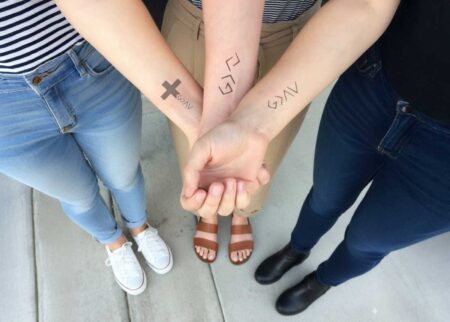Got a tattoo you don’t want any more? If you’ve been scrolling the internet for tattoo removal advice, you’ve likely seen everything from miracle claims to horror stories. The reality sits somewhere in the middle — laser technology has advanced, results build gradually, and aftercare matters more than you think.
Don’t leave your laser tattoo removal procedure to guesswork. Before you book your first session, it helps to know how it really works. These 15 points cover the basics, from devices and ink colours to recovery and timelines, so you know what to expect.
1. Ink Colours Fade at Different Speeds
Black and dark blue ink usually respond quickest because lasers can target them efficiently. Greens, teals and some reds can be more stubborn. The right wavelength for the right pigment makes a big difference.
2. One Session Is Not Usually Enough
Most professional tattoos need multiple visits spaced 6–10 weeks apart so your body can clear the shattered ink between sessions. You’ll usually see meaningful change by sessions 2–3, but full clearance can take longer.
3. Most Patients Heal Without Scarring
Scarring is uncommon when treatments are performed by trained clinicians and proper aftercare is followed. Temporary texture or pigment changes are more typical and often settle with time.
4. Darker Skin Can Be Treated Safely
Experienced practitioners use conservative settings, patch testing and suitable wavelengths to protect darker skin tones. You may need more sessions, but outcomes can still be excellent.
5. Newer Devices Improve Efficiency and Comfort
Device generation and pulse duration matter. Picosecond lasers can break up pigment more efficiently, and modern cooling systems help with comfort and consistency.
6. Pain Level Does Not Indicate Effectiveness
The sensation is often compared to a heated elastic band snap, sharp but quick. Pain does not equal performance. Cooling and numbing options make treatments manageable.
7. White Frosting Is Normal
This temporary milky film after each laser pass is just gas forming in the upper skin layers. It fades within minutes and is a normal response.
8. Sun Exposure Affects Results and Safety
UV exposure increases the risk of pigment changes and irritation. Under Singapore’s strong sunlight, diligent sunscreen use and protective clothing are essential before and after sessions.
9. Size Is Only One Factor
Ink density, colours, layering, placement and circulation all affect how long removal takes. A small but dense tattoo may take longer than a larger faded one.
10. Aftercare Drives Results
Keep the area clean and dry for the first day, use fragrance-free ointment, avoid picking, pause acids and retinoids, and use SPF consistently.
11. Do Not Pop Blisters
Blisters can occur and should be left intact. Keep them covered and clean to reduce infection risk and prevent scarring.
12. Hydration Alone Will Not Speed Clearance
Clearance is driven by your immune system over weeks. Consistency, spacing and lifestyle habits influence results more than drinking extra water before a session.
13. Cover-Ups Often Need Fading, Not Erasure
If you’re planning a cover-up, a few fading sessions may be enough to give your tattoo artist more flexibility, no need to fully remove the old tattoo.
14. Early Subtlety Does Not Mean Failure
Early fading can be subtle. Consistent photo tracking helps you notice progress, especially by sessions 2–3.
15. The Practitioner Matters
Skill matters. From wavelength choice to aftercare advice, an experienced practitioner tailors each step to your skin and your tattoo.
Singapore-Specific Tips for Laser Tattoo Removal
Humidity, heat and year-round sunshine add extra considerations for laser tattoo removal in Singapore. Book sessions when you can keep the area cool and covered, and wear loose, breathable fabrics.
If you love outdoor workouts or hot yoga, take a short break after treatment. Because UV is constant here, daily sunscreen matters. If you’re working toward a deadline (weddings, graduations, military intake), plan backwards and factor in the 6–10 week spacing.
What a Realistic Timeline Looks Like
Sessions 1–3: Breaking up dense pigment and observing your skin’s response. Expect softened edges and a more washed-out look.
Sessions 4–6: Usually where the biggest visual change happens as particles continue to clear.
Sessions 7+: Refinement phase targeting residual colours, embedded pigment and layered areas.
Remember: Spacing sessions gives your body time to clear pigment safely.
Quick Checklist for Choosing the Right Laser Tattoo Removal Clinic
- Medical-grade devices, properly maintained
- Patch testing before full treatment
- Clear written aftercare and realistic estimates
- Consistent photo tracking
- Protocols suitable for sunny climates, spacing, cooling, SPF
- Transparent pricing and expectations
Start Your Tattoo Removal Journey Right
Laser tattoo removal isn’t a magic eraser, it’s a partnership between laser physics, skilled technique and your body’s natural healing. Choose a clinician who prioritises your skin and follow aftercare closely for the best results.






